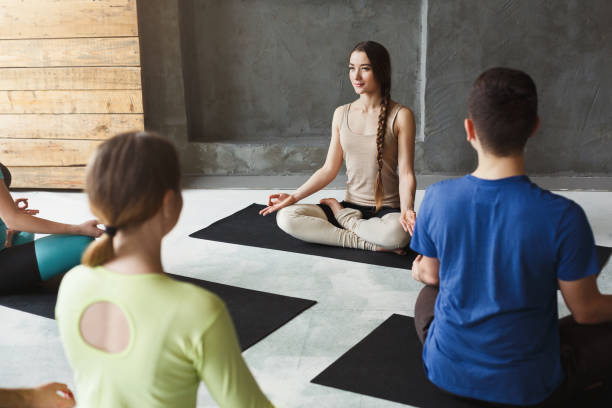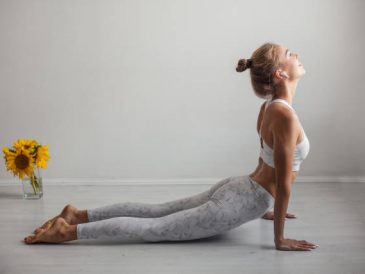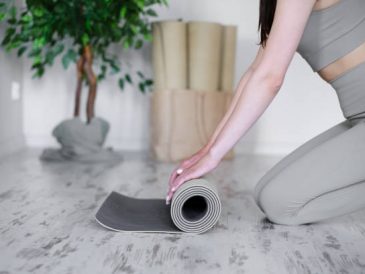Yoga teachers are also students!
Yoga teachers are always students because they are constantly learning new techniques and knowledge. All yoga instructors should be open to learning and picking up tips to improve their ability to teach an amazing class.
Here are some tips and tricks I’ve learned as a yoga instructor over the years.
Prepare.
I feel bothered when you are busy. You travel, work, cook, drive, and socialize. It takes a lot to keep everything together. Preparation is key, whether you teach five days a week or once a month.
I would advise you to prepare what you will teach and what music to accompany it. Also, have a backup plan for the unexpected — that everyone in your class may be new to yoga.
Some teachers prefer to write out the entire sequence and practice it themselves before teaching it. Others get ideas for sequencing by attending another class or using online multimedia. Take the time to plan.
Select music that makes sense.
I used to go to a yoga studio a lot. The owner and the teachers who followed her would often play background music. The music was not in sync with the flow. When there is dance/hip-hop playing, it isn’t easy to meditate and relax.
The teacher will apologize, get distracted, and then rush to their stereo or Bluetooth iPod to find something better. Create playlists that fit the sequence.
I update and change my playlists regularly depending on which class I’m teaching. I know my playlists well and can tell when to start a class or to take them to the mat, depending on what song is next.
After the first 20 minutes in a 90-minute vinyasa playlist, I know it’s time to transition from seated meditation to my first warm-up asana. When the music starts to change, I know it is time to tell my students to move forward.
Arrive early at the studio.
Prepare your teaching space. Dim the lights or turn them on. Mentally prepare yourself to teach. Teachers in the Sivananda Tradition light incense, chant, and pray before each class.
It is not a practice that I have adopted, but it is one I admire because I can see their enthusiasm and energy when they stand at the front. Unprofessional is a teacher who rushes into the classroom at the last moment, the one prior to putting up the mat, and then says hello breathlessly to students as they remove their jackets.
Use verbal cues rather than visual ones.
It is sometimes necessary to demonstrate, but most students understand what you are saying when you say, “lift your right foot up” or “find Upward Facing dog.” Verbal clues give the teacher the flexibility to move around the classroom to adjust alignment.
I teach my classes without much or any demonstration. Students tell me that verbal instructions help them “feel” postures, and they can go deeper in the practice.
Before I adjust, I verbally cue the student if I notice a misalignment. The student who is doing the incorrect pose will often correct themselves with just a verbal cue. My response to the class is, “Nice adjustments! Everyone looks great!”
Speak less.
This advice is useful in two different ways. First, use fewer words. This is your explanation of how to get into a particular yoga pose.
You can say “Right Foot Lifts” instead of “Pick up the right foot, step it between your hands, then pivot the left leg so that it is at a 45-degree angle, and lift the arm to enter Warrior 1.” (pause). Get up. (pause) Back foot pivots. (pause) Arms lift, Warrior One.”
If you have a new student who needs more explanations, perhaps explain the asana to them in detail first, then use the simplified version second.
Second, enjoy the silence. Some teachers fill the entire space with words. Silence can be powerful. Instead of using too much language, let the music inspire you, and your silence fill in the space.
Students need to get their heads out of the clouds.
Most people find it difficult to remain present. They often think about what they have to do after school, or even “I really like her blouse, I wonder where she bought it?”
Telling a story or sharing a bit of wisdom can help you bring students back to the classroom. You can start with something simple, like “Do you know what Halasana does?” and elaborate. Share a bit about yourself or your day. This will get students back on their mats.
Do not be childish, but rather childlike.
Make it Fun! No one enjoys a boring yoga class or teacher. Make it personal. Smile, laugh, and make the class fun. Make the students do kaliasana ( goddess’ squat), and have them dance with their feet an inch from the floor.




